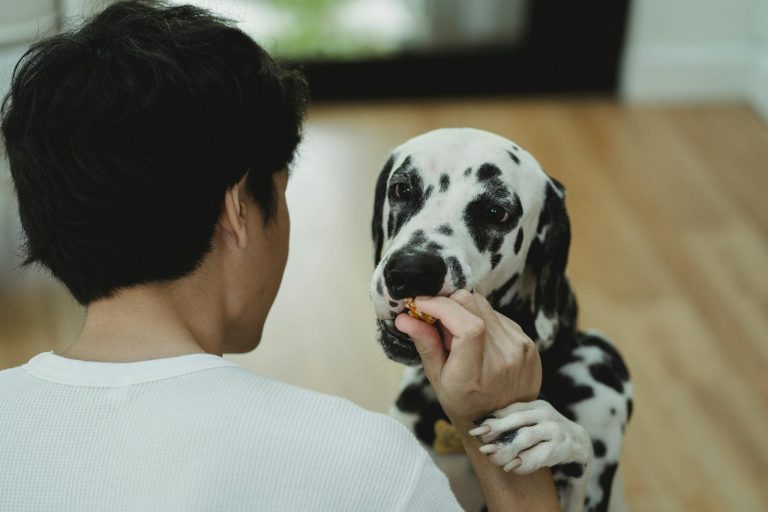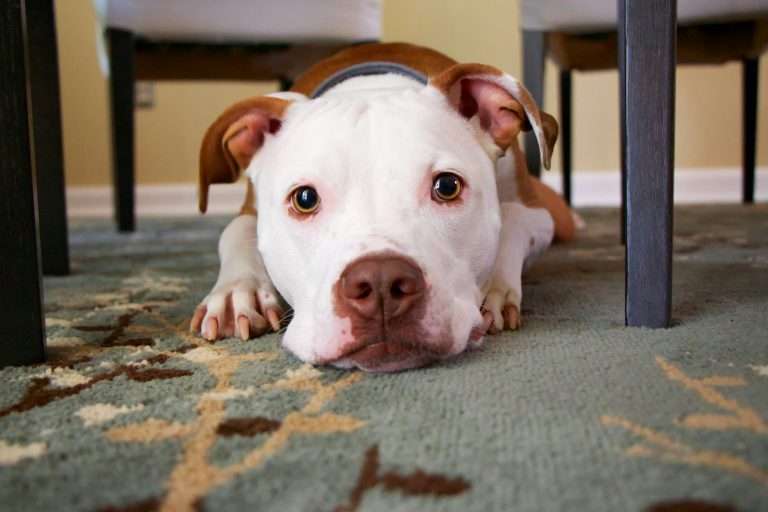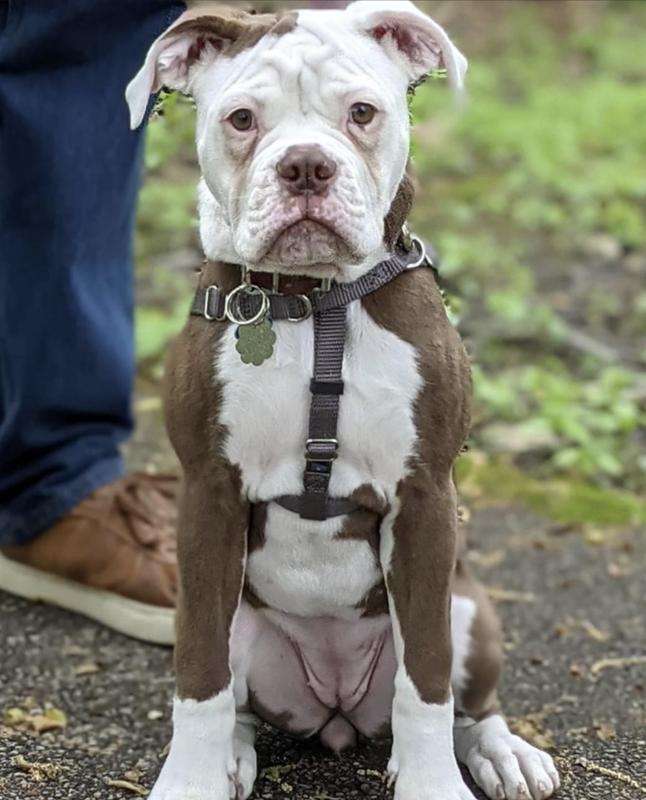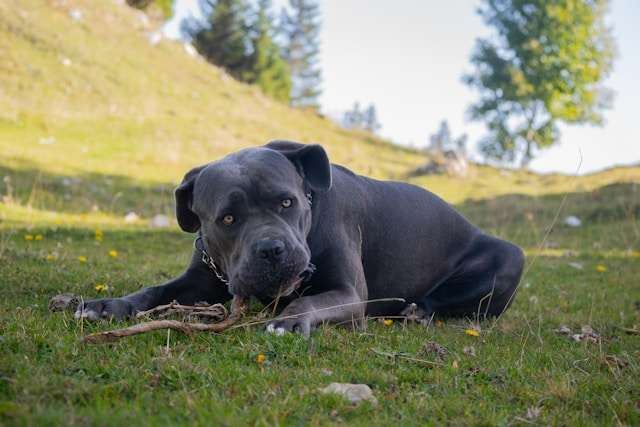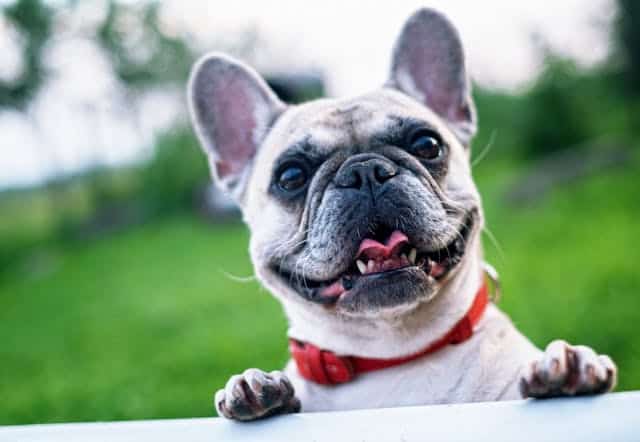Best Dog Grooming Tips: Tailor the Routine to Your Pup’s Unique Coat Type
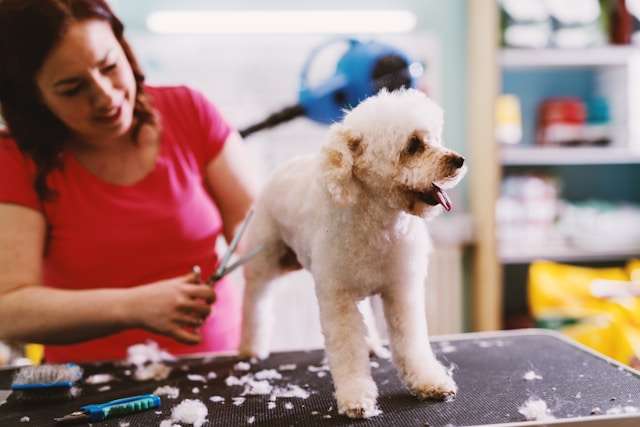
Best Dog Grooming Tips: Tailor the Routine to Your Pup’s Unique Coat Type. Choosing the perfect grooming routine for your dog starts with understanding their unique coat type. Each dog has different needs, from sleek, low-maintenance coats to thick double layers that need extra care. A well-matched grooming routine keeps them looking good and ensures their comfort and overall health.
Whether it’s regular brushing, nail trims, or ear cleaning, tailoring these dog grooming tips to your dog’s specific coat can make a big difference. Check out Pomeranian Care: Tips For New Owners to dive deeper into seasonal grooming advice for particular breeds. Let’s set your pup up for grooming success!
Table of Contents
Key Takeaway
Finding the best grooming routine for your pup isn’t just about keeping them looking sharp—it’s about their overall comfort and well-being. Every dog has its quirks, and understanding what works for their specific coat type can take grooming time from a chore to a cherished bonding moment. Let’s break down the essentials to ensure your furry friend is happy and healthy with every brushing, bathing, and trimming session.
Regular Brushing: A Must for Every Dog
Brushing isn’t one-size-fits-all; the needs of your dog’s coat type dictate the frequency and tools you’ll need. For short-haired breeds, brushing once a week is typically enough to keep loose fur under control and natural oils evenly distributed. Long-haired breeds, on the other hand, may need daily attention to prevent tangles and mats. Not sure where to begin? A slicker brush or shedding tool can make a difference, particularly for double-coated breeds.
Bathing: Less is More
Bathing too often can rob your dog’s coat of its natural oils, leading to dryness and irritation. Aim for a bath every 4-6 weeks or whenever your pup smells less than fresh. Always opt for shampoos designed specifically for dogs to avoid harsh chemicals that could harm their sensitive skin. The ASPCA Grooming Guide offers excellent tips for choosing the right dog shampoo.
Nail Trimming: Keeping It Comfortable
Don’t let those nails get out of hand—literally. Overgrown nails not only risk injury but can also make walking uncomfortable for your dog. Invest in a high-quality nail clipper or grinder, and remember to take small amounts off at a time to avoid cutting the quick. If you’re new to trimming, you can learn more by visiting how to groom your dog at home, which provides clear, step-by-step instructions.
Ear Cleaning: Stay Ahead of Infections
Dogs’ ears often go overlooked in grooming, but regular checks are vital. Look out for dirt, wax buildup, or signs of infection like redness or an unusual smell. Use a vet-recommended cleaning solution and cotton pads to clean only the outer ear gently. If you’ve got a Shih Tzu or any breed with floppy ears, make cleaning a part of your routine, as highlighted in Shih Tzu Traits: Pros And Cons.
Positive Reinforcement: Make Grooming a Joy
No one likes to be poked and prodded without reward, and your dog is no different. Stock up on their favorite treats or praise them gently throughout the grooming session. This approach can help reduce your pup’s anxiety and make them look forward to the next time. A relaxed dog is far easier to groom, and this strategy works wonders for tasks they might initially resist, like nail trimming or brushing.
By incorporating these key practices, you set the stage for a grooming routine that caters to your pup’s unique needs without overcomplicating the process. The right balance ensures they look good and feel their absolute best.
Understanding Your Dog’s Coat Type
When grooming your furry friend, their coat type plays a massive role in determining the proper care routine. Every coat type has unique needs, from sleek and short coats to curly or fluffy textures. Let’s explore the different kinds of dog coats and how you can tailor your grooming routine to keep your pup looking and feeling their best.
Short-haired Dogs
Short-haired breeds, like Beagles and Boxers, are often celebrated for their minimal grooming needs. While their coats are low maintenance, they still require care to maintain overall health. Brushing them weekly with a bristle brush helps to remove loose hair and dirt and distribute their natural oils evenly across the skin, giving their coat a polished sheen.
A quick weekly brushing session keeps them clean and reduces the chances of shedding around your home. Plus, they will surely enjoy an excellent bonding time with your pup.
Long-haired Dogs

Photo by Gustavo Fring
Long-haired breeds, like Shih Tzus or Yorkshire Terriers, often resemble walking clouds of fluff. However, with such beauty comes great responsibility. Daily brushing is necessary to prevent tangles and mats, which can be painful and lead to skin issues if ignored.
Invest in a slicker brush for detangling and handling their long, luscious coats. Additionally, routine trims keep their coat manageable every 6-8 weeks and help ward off matting. Ensuring daily care may seem time-intensive, but your pup’s comfort and stunning look make it all worthwhile.
Double-coated Dogs
If your dog has a double coat, like a German Shepherd or Siberian Huskie, you’re likely familiar with its epic seasonal shedding. These breeds have two layers: a dense undercoat and a protective topcoat. Shedding can ramp up during seasonal changes, turning your house into a sea of fur.
A de-shedding tool like the popular Furminator is your best ally. Regular de-shedding reduces the amount of loose fur and keeps their coat healthy. Aim for weekly brushing to stay ahead of the shedding and avoid the dreaded hair tumbleweeds in your home.
Ear Cleaning
Dogs’ ears are prone to infections, especially in floppy or hairy breeds like Cocker Spaniels. Regular ear checks can go a long way in ensuring their ear health. Use a vet-approved ear-cleaning solution and soft cotton pads to clean the outer ear gently. Look out for any redness, unusual odors, or excessive wax, as these may indicate an issue that requires a vet’s attention. Healthy ears contribute to a happier dog, so don’t skip this step.
Curly or Wavy-coated Dogs
Curly or wavy-coated breeds, such as Poodles or Doodles, have truly unique grooming needs. Their coats can easily mat if not groomed diligently. Regular trims, as often as every 6-8 weeks, are essential to stabilizing their curls. Frequently brushing with a metal comb or slicker brush in between trims ensures their coat remains tangle-free.
Curly coats also tend to trap dirt and debris close to the skin, so ensure you groom them thoroughly right down to the base of the coat.
Hairless Dogs
Hairless breeds like the Chinese Crested or Xoloitzcuintli might not have fur to brush, but caring for their skin is essential. Their exposed skin is prone to dryness, irritation, and even sunburn. Use a moisturizer designed for dogs to keep their skin hydrated and healthy. Additionally, dog-safe sunscreen can protect them from harmful UV rays during sunny outings.
Just because they’re hairless doesn’t mean they’re maintenance-free—their unique grooming needs make them just as special!
By understanding your dog’s coat type and tailoring your care routine, you can transform grooming from a task into a bonding experience that keeps your pup both healthy and happy.
Essential Dog Grooming Tips for All Coat Types
Taking care of your dog’s grooming is more than just about appearances; it’s essential for their health, comfort, and overall well-being. Whether your pup’s coat is short and sleek or long and fluffy, a consistent grooming routine can make a significant difference. Let’s explore key aspects of dog grooming that every pet parent should embrace.
Regular Brushing: A Must for Every Dog
Brushing your dog’s coat isn’t just about keeping it looking tidy—it’s essential for its health. Regular brushing removes loose fur, dirt, and potential allergens. For dogs with dense or double coats, it also keeps their undercoat in check, reducing the battle against endless shedding around the house.
Brushing distributes natural skin oils, acting like nature’s moisturizer for their coat. For short-haired breeds, weekly sessions with a bristle brush should suffice. Long-haired breeds, however, need daily attention to prevent painful tangles and mats. Using tools like a slicker brush or de-shedding tool can make a big difference, ensuring you’re effectively targeting both the topcoat and undercoat.
Bathing Frequency and Tips
When it comes to bathing, less is often more. Overbathing can strip away your dog’s natural oils, leading to dry, itchy skin. Generally, a bath every 4-6 weeks works well for most dogs, but this may vary based on their coat type and activity level.
Always use a dog-specific shampoo designed to protect their delicate skin. Human shampoos have a different pH and can cause irritation. The ASPCA Dog Grooming Tips is a valuable resource for expert-recommended shampoos.
Nail Trimming and Care
Keeping your dog’s nails trimmed is about more than appearances—it’s vital for their comfort. Overgrown nails can make walking painful and even affect their posture. Always use sharp, high-quality nail clippers or grinders designed for pets when trimming. Trim in small increments to avoid cutting the quick, which can cause pain and bleeding.
If you’re new to nail trimming and need assistance, check out How to Groom Your Dog at Home, which provides clear, beginner-friendly guidance.
Teeth Cleaning
Did you know that regular teeth brushing can extend your pup’s life? Neglecting oral hygiene can lead to tartar buildup, bad breath, and even serious health issues like heart disease. Use a dog-friendly toothbrush and flavored toothpaste to make brushing a positive experience. Start slow, maybe just cleaning one area at a time, and reward your pup with praise or a small treat afterward.
Aim to brush your dog’s teeth at least two to three times a week. While dental chews and toys are helpful, nothing beats the effectiveness of manual brushing for maintaining oral hygiene.
Paw Care
Your dog’s paws are connected to the world, so keeping them in tip-top shape is essential. Regularly inspect their paws for cuts, splinters, or any debris lodged between their pads. Trimming the fur between the pads prevents matting and reduces the risk of slipping on smooth surfaces.
If your pup’s pads appear dry or cracked, use a dog-specific paw balm to soothe and hydrate them. Consistent paw care ensures your pup stays comfortable, whether walking on hot pavement or trekking through snowy trails.
Incorporating these grooming essentials into your routine will keep your pup happy, healthy, and looking their best. Grooming might feel like a small part of dog ownership, but the bond it creates and the health benefits it provides are immeasurable.
Specific Grooming Practices for Popular Breeds
Grooming practices vary widely depending on a dog’s breed, and understanding your pup’s unique needs is the key to keeping their coat looking its best. Let’s look at some specific grooming routines tailored for popular breeds.
Labrador Retrievers
Labrador Retrievers, known for their playful energy and water-resistant double coats, require consistent grooming to manage shedding and maintain a healthy coat. Their double coat consists of a dense undercoat beneath a sleek outer layer, protecting against weather conditions.
Key Grooming Tips for Labs:
- Weekly Brushing: Use a de-shedding tool or slicker brush to tackle shedding during peak seasons, especially in spring and fall. Brushing helps distribute natural oils across their coat, keeping it healthy and shiny.
- Bathing: Labrador Retrievers usually only need a bath every 6-8 weeks unless they’ve had a particularly muddy adventure. Always use a mild, dog-friendly shampoo.
- Seasonal Shedding: Pay extra attention during shedding seasons with more frequent brushing to keep fur under control.
For more insights into Labrador grooming routines, visit The Ultimate Guide to Labrador Retriever Care.
Shih Tzus

Photo by Tima Miroshnichenko
Shih Tzus, with their long, flowing locks, are a grooming-intensive breed. If left unchecked, their coat can become tangled and matted, which might cause discomfort or even skin irritation.
Essential Grooming Tips for Shih Tzus:
- Daily Brushing: Use a slicker or pin brush to detangle and smooth their coats. Regular brushing prevents matting and ensures their luxurious coat stays in prime condition.
- Bathing and Conditioning: Bathe your Shih Tzu every 3-4 weeks, using a gentle shampoo and conditioner to keep their coat soft and moisturized.
- Regular Trims: A trip to a professional groomer every 6-8 weeks helps maintain their coat’s length and shape.
For more about Shih Tzu grooming routines and dog traits, check out Shih Tzu Traits: Pros and Cons Every Dog Lover Should Know.
Pomeranians
Pomeranians may be small, but their fluffy double coat demands big grooming efforts. Their coat features a thick underlayer and long, soft outer fur, giving them their signature cloud-like appearance.
How to Groom Pomeranians Properly:
- Regular Brushing: To maintain their voluminous coat, brush them at least 3-4 times a week using a slicker brush. Pay special attention during seasonal shedding periods to remove loose undercoats and prevent tangles.
- Bathing Needs: Poms typically require a bath every 4-6 weeks. Use shampoos designed for long-haired breeds to keep their coat fluffy and clean.
- Seasonal Care: During heavy shedding periods, incorporate a de-shedding tool to handle fur loss more effectively.
Learn more valuable tips for Pomeranian grooming at Pomeranian Care: Tips for New Owners.
By tailoring your grooming routine to meet your dog’s specific requirements, you ensure their good looks, comfort, and overall health.
Creating a Positive Grooming Experience
Grooming doesn’t have to be stressful—for you or your dog. A well-thought-out approach can turn grooming sessions into moments of bonding and care. By focusing on positivity, comfort, and preparation, you can make the experience enjoyable for your furry friend. Here’s how!
Using Positive Reinforcement: Encourage treats and praise to help your dog associate grooming with positivity.
Positive reinforcement during grooming sessions can work wonders in ensuring your pup feels at ease. Treats, praise, and even their favorite toy can transform grooming from a chore into a rewarding experience. Think of it as a celebratory moment, not unlike rewarding kids for a job well done.
- Use bite-size treats: Keep the treats small so you can reward them frequently without upsetting their stomach.
- Praise often: A soothing voice accompanied by phrases like “Good girl!” or “Good boy!” can calm a nervous pup.
- Create a routine: Consistently repeat the treats and praise method so your dog knows what to expect.
Dogs thrive on routine and positive association. By pairing grooming tasks—like brushing or nail trimming—with pleasant rewards, you’ll soon find them wagging their tail at the sight of a grooming brush. Check out this insightful guide for more tips on creating a positive grooming experience.
Starting Slow and Building Comfort: I recommend starting with short grooming sessions and gradually increasing their duration as your dog becomes more accustomed.
Rome wasn’t built in a day, and neither should your dog’s tolerance for grooming. Start with sessions that are only a few minutes long, focusing on keeping things chill and stress-free. Over time, increase the grooming duration.
- Begin with a favorite spot: Start there if your dog enjoys being scratched behind the ears. Gradually introduce brushes or tools while keeping them relaxed.
- End on a high note: Always finish grooming sessions with something positive, like playtime or a walk.
The key is patience. Short, calm grooming sessions allow your dog to adjust without feeling overwhelmed. It’s like dipping your toes in the water before a swim—easing into it makes the process far less intimidating.
Comfortable Grooming Environment: Share tips on setting a calm and soothing environment, including using a grooming table if necessary.

Photo by Matheus Bertelli
Comfort is key to making grooming a pleasant experience. A calm and familiar space can drastically reduce your pup’s anxiety levels.
- Keep noise down: Choose a quiet room away from distractions like TV or other pets.
- Introduce a non-slip rug: This ensures your dog feels stable and reduces panicking on slippery floors.
- Consider a grooming table: If your dog cooperates, a table with a secured harness can make the process easier for both of you.
The goal is to create an atmosphere that feels safe. Lighting smells and even the soundtrack of the space (consider soft, instrumental music!) influence how your dog reacts to its grooming environment.
When to Seek Professional Help: This section will guide you on when to seek a professional groomer, such as for intricate cuts or managing fear and resistance.
Sometimes, even with the best intentions, grooming at home might not fit. Professional groomers are trained to handle brutal cuts or fearful dogs in ways that ensure safety and comfort.
- Intricate styles: Breeds like Poodles or Schnauzers often require precise trims, which are best left to the experts.
- Behavior concerns: If your pup has persistent fear or aggression during grooming, professional groomers have tools and techniques to help.
- Medical grooming: Issues like matted fur close to the skin or inflamed nail beds might need professional attention to avoid causing harm.
Knowing when to step back can save you and your dog unnecessary stress. Trusting grooming pros isn’t a failure; it’s a thoughtful move for your dog’s well-being. If you’re starting with grooming, some simple home tips can make the transition smoother.
Creating a positive grooming experience isn’t just about cleanliness; it’s a form of care and connection. Investing in your dog’s comfort lays the groundwork for lifelong trust and relaxation during grooming time.
FAQ
Every dog owner has questions about grooming, especially tailoring routines for their pup’s coat type. Here’s a helpful FAQ section to address common concerns and provide actionable solutions, ensuring your furry friend stays happy, healthy, and fresh.
How Often Should I Groom My Dog?
The frequency of grooming depends on your dog’s coat type and lifestyle. Here’s a general guideline:
- Short-haired breeds (like Beagles): Weekly brushing is sufficient.
- Long-haired breeds (such as Shih Tzus): Daily brushing to prevent tangles and mats.
- Curly or wavy-coated breeds (like Poodles): Brush several times weekly and schedule trims every 6–8 weeks.
- Double-coated breeds (like Huskies): Weekly de-shedding year-round, with extra attention during shedding seasons.
- Hairless breeds: Regular skin care, including moisturizing and sunscreen.
For more guidance tailored to your breed, explore Pomeranian Care: Tips for New Owners to learn how grooming needs vary.
Can I Use Human Shampoo on My Dog?
No, you should always use shampoos specifically formulated for dogs. Human shampoos can disrupt your dog’s skin pH balance, causing irritation or dryness. Instead, choose a product designed for your pup’s coat type or sensitive skin.
The ASPCA Grooming Guide explains the importance of pet-safe shampoos and conditioners if you’re looking for recommended grooming products.
What Tools Do I Need for Grooming at Home?
Having the right tools makes all the difference. Here’s what you’ll need for most coat types:
- Brushes and Combs: Slicker brushes, bristle brushes, or de-shedding tools, depending on your dog’s coat.
- Nail Clippers or Grinders: Trim nails safely to avoid discomfort.
- Shampoo and Conditioner: Choose dog-specific formulas.
- Ear Cleaning Solution: Vet-approved cleaners to prevent infections.
- Drying Tools: A towel and pet dryer for quick drying after baths.
This starter kit ensures you’re prepared for all the basics. If you’re just starting, dive into how to groom your dog at home for tips on DIY grooming.
How Do I Prevent My Dog from Becoming Anxious During Grooming?
A nervous pup can make grooming a challenge, but here are some quick tips to keep them calm:
- Start Slow: Begin with short sessions, focusing on one task at a time.
- Positive Reinforcement: Use treats and praise to reward good behavior.
- Create a Calm Atmosphere: Groom in a quiet space without distractions.
- Desensitize Gradually: Introduce grooming tools when your dog is relaxed—let them sniff and explore.
Most dogs learn to tolerate or even enjoy grooming with time and patience. This Animal Humane Society guide provides additional strategies and actionable advice.
What Should I Do If My Dog Hates Nail Trims?
Nail trimming can be tricky, especially for dogs not used to it. Try these methods to make it more manageable:
- Trim Gradually: Clip small sections rather than the entire nail in one go.
- Distract Them: Have someone offer treats or peanut butter while you trim.
- Take Breaks: Stop if your dog becomes too anxious, and try again later.
If nail trims remain a struggle, consider consulting a groomer or vet for professional help.
Are There Special Grooming Needs for Puppies?
Puppies often need gentler care, given their soft coats and developing bodies. When grooming a puppy:
- Start Young: Introduce grooming early to create a positive association.
- Use Gentle Tools: Opt for soft-bristle brushes to avoid irritation.
- Be Patient: Keep sessions short and fun.
- Frequent Bathing: Puppies may get dirtier faster, but choose a mild dog shampoo and rinse thoroughly.
To build essential grooming habits early, training guides like this resource on dog care offer extra insights for new pet parents.
If you have more burning questions about grooming routines, rest assured that it’s all about finding what works best for you and your pup.
Conclusion
Tailoring your dog’s grooming routine to their specific coat type is one of the simplest ways to ensure their health and happiness. From regular brushing to thoughtful bathing schedules and ear care, these small steps can make a big difference in their well-being.
Grooming is more than keeping your pup clean—it’s a chance to strengthen your bond. With the right approach, tools, and mindset, it can become a cherished part of your routine together.
If you’re ready to explore more dog grooming tips and advice, dive deeper into helpful resources at K9 NutriPick and keep your furry friend looking and feeling their best. ????

